Photographer based in Berlin, Germany
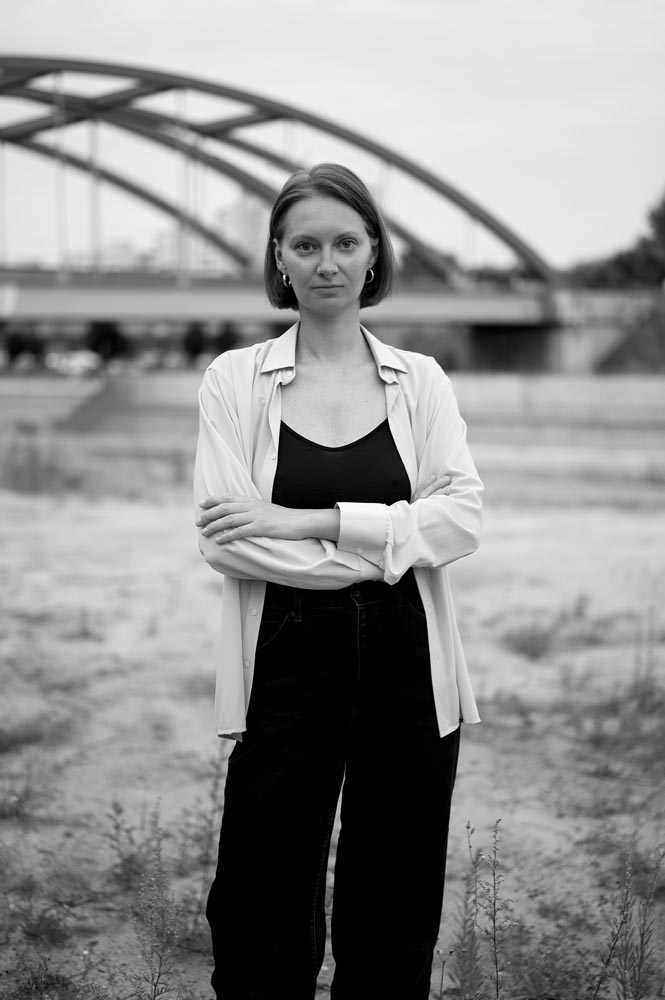
Tanya Sharapova, Photo by Mathilde Tijen Hansen
Tell us about yourself, what's your background?
I was born in Moscow and started photographing when I was in school. I was exactly that kid who makes you blind with a camera flash at the last moment you expect it. For quite some time, I was part of the Lomography movement, which is an analogue experimental photography style where you don’t think much about composition and rely more on chance and the magic of the process.
I studied digital television at university, but after graduating, I became an editor at Photo and Video magazine. This marked the beginning of my professional career in photography. Over the years, I moved into roles as a picture editor and producer, eventually working at Conde Nast for six years. But at some point, I felt the need for a change, so I left office work to become a freelance travel photographer and writer for major Russian magazines like National Geographic and Conde Nast Traveler. After three years of traveling, I settled in Berlin in 2019, when I was granted an artist visa. In 2024, I graduated from Irina Ruppert’s class at Ostkreuzschule für Fotografie, where I focused on documentary photography and the creative possibilities of the medium.
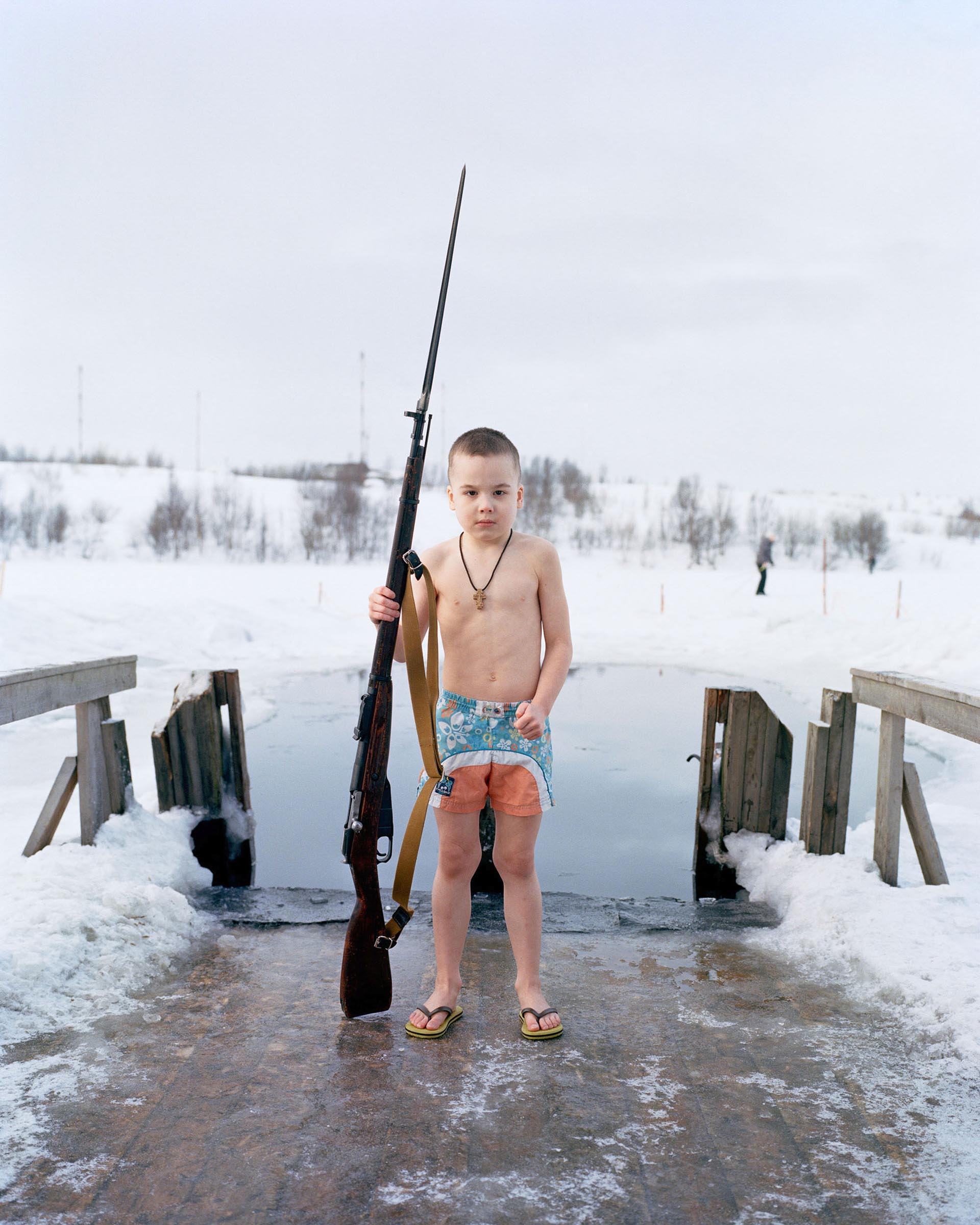
Valya dreams of studying in a military school to become a paratrooper, inspired by his favorite YouTube singer. He swims three or four times a week in Lake Semyonovskoye, regardless of the Arctic cold. Murmansk.
Kolsky project, 2019-2024. Medium Format Film Photography
“My inspiration comes mostly from my inner experiences and feelings, which I transform into non-verbal forms of self-reflection. Travel, movies, books, and simply observing people and reality are also great sources of inspiration.”

Garages and a heating station pipe in Roslyakovo. Roslyakovo was closed military city until 2015, now it is part of the bigger city Murmansk. 2019.
Kolsky project, 2019-2024. Medium Format Film Photography
What are you currently working on and where did the inspiration for it come from?
Right now, I am working on a book for my ‘Kolsky’ project. I have a lot of material, and it's time to bring the project into a new form. I am also doing a lot of research for upcoming projects. My inspiration comes mostly from my inner experiences and feelings, which I transform into non-verbal forms of self-reflection. Travel, movies, books, and simply observing people and reality are also great sources of inspiration.
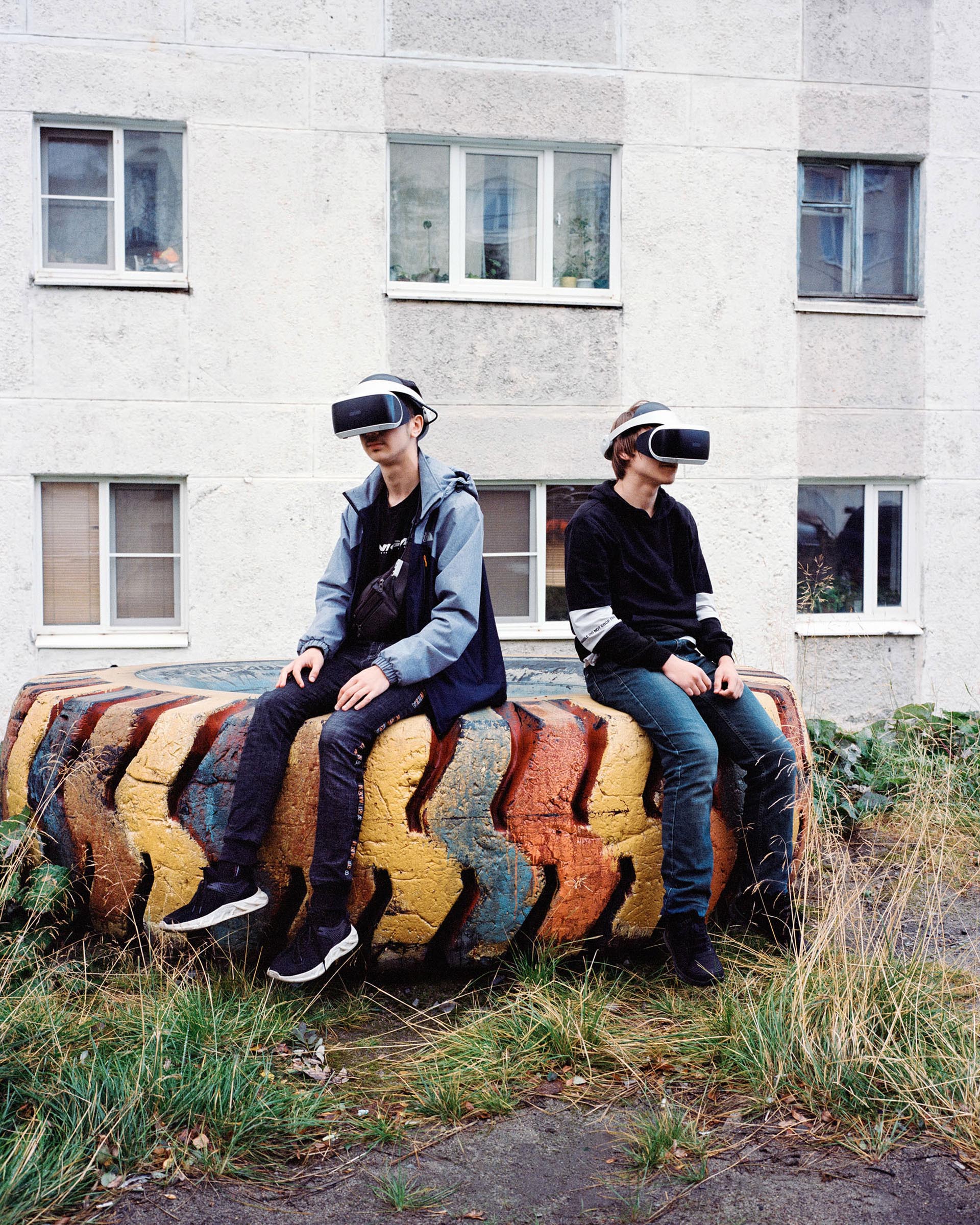
Sasha and Vlad sit with their VR glasses near Fun Club, where they spend most of their time playing computer games. Their favorite game involves shooting at people to the rhythm of the music. Zapolyarny.
Kolsky project, 2019-2024. Medium Format Film Photography
Innovation does not only happen in the field of technology — it occurs everyday in a creative practice. What do you do for inspiration?
I do enjoy observing, so I walk and take public transport a lot—buses or the subway—so I can sit and observe people, their behavior, and emotions. I like spontaneous travel, just going to random spots on a map or exploring off-beaten paths.
Sometimes, I create rules for myself or give myself tasks, usually during moments when I want to understand or explore something. For example, for the ‘Strangers' project, the task was to photograph one stranger per day during the lockdown in Berlin. The lockdown lasted for 271 days. It was quite a challenge and a great way for me to understand the new city and the people living here.

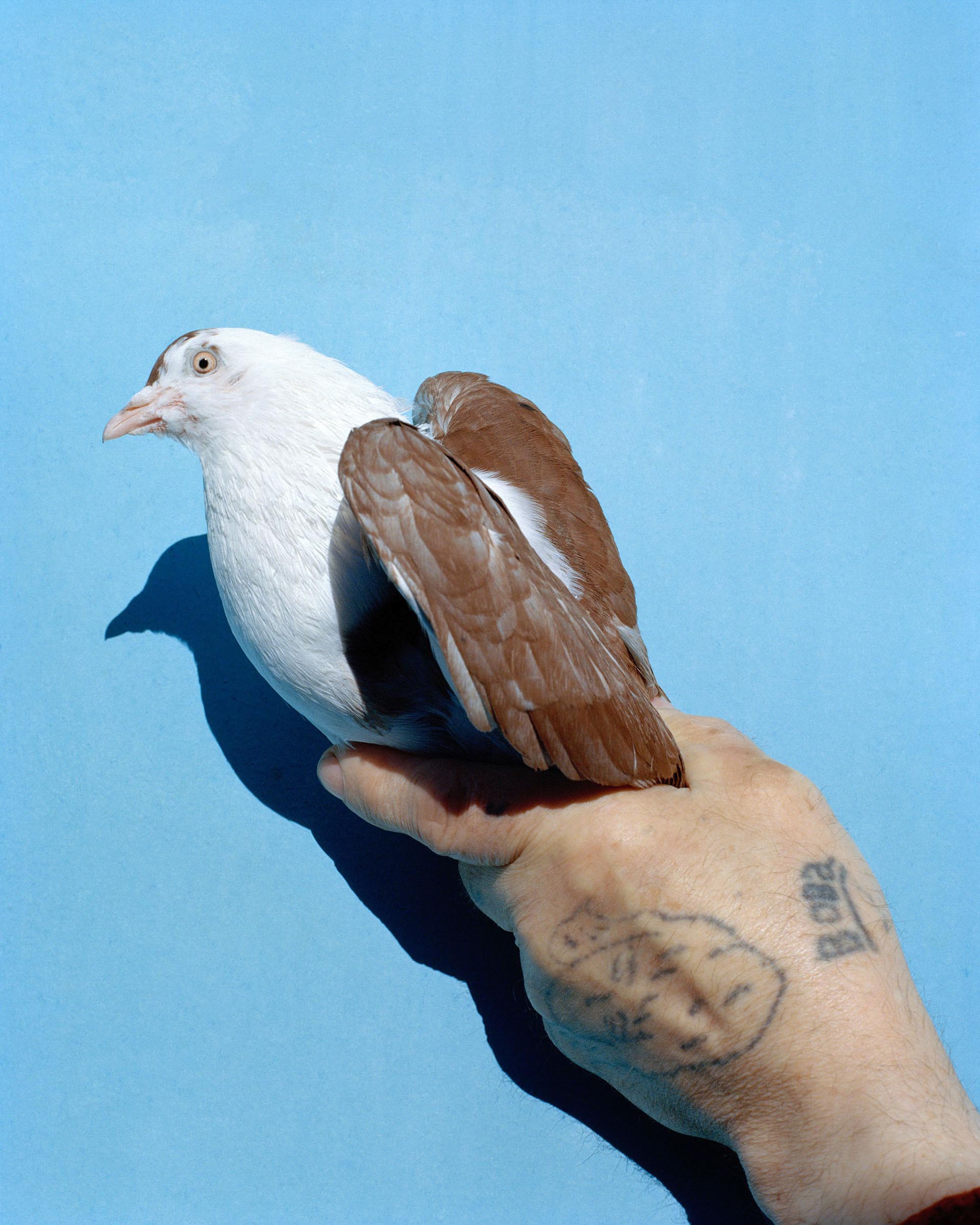
(Left) Nikita lives in Zapolyarny city near the Norwegian border on Russian side. He helps Ukrainians who get out of filtration camps to reach the Russian-Norwegian border, from where they travel to the city Kirkenes, their starting point in Europe.
(Right) Symbolic image: A tattoo on a hand reads ‘Vova,’ short for the name Vladimir. The protagonist of the image resides in Murmansk and manages a dovecote, planning to sell some of his 40 birds due to the high cost of feeding them—16 euros a month.
Kolsky project, 2019-2024. Medium Format Film Photography
Describe your practice and process. Where do ideas start for you? In the studio or being in the world?
My approach depends on the project. Sometimes I photograph spontaneously and research afterward, while other times research comes first and leads to the concept. The idea usually evolves during the process itself, as I work to understand the subject deeper. It’s not just about capturing what I imagined but about understanding the topic more deeply.

Shooting 'Kolsky' project in Murmansk, Russia
How do you make your work, does it start with a sketch?
For long-term projects, I prefer to photograph intensively during limited trips, typically 2-3 weeks at a time. For Kolsky, which focuses on the Kola Peninsula near the Arctic Circle, the experience was emotionally challenging. Each time I arrived, I felt a sense of hopelessness and stagnation in the air. But at the same time, I encountered open and honest people willing to share their struggles. My days were intense—2-3 portrait sessions, followed by walking around to capture more images and locations. After each trip, I would return home quite exhausted but knowing I had several really good images and stories in my pocket.
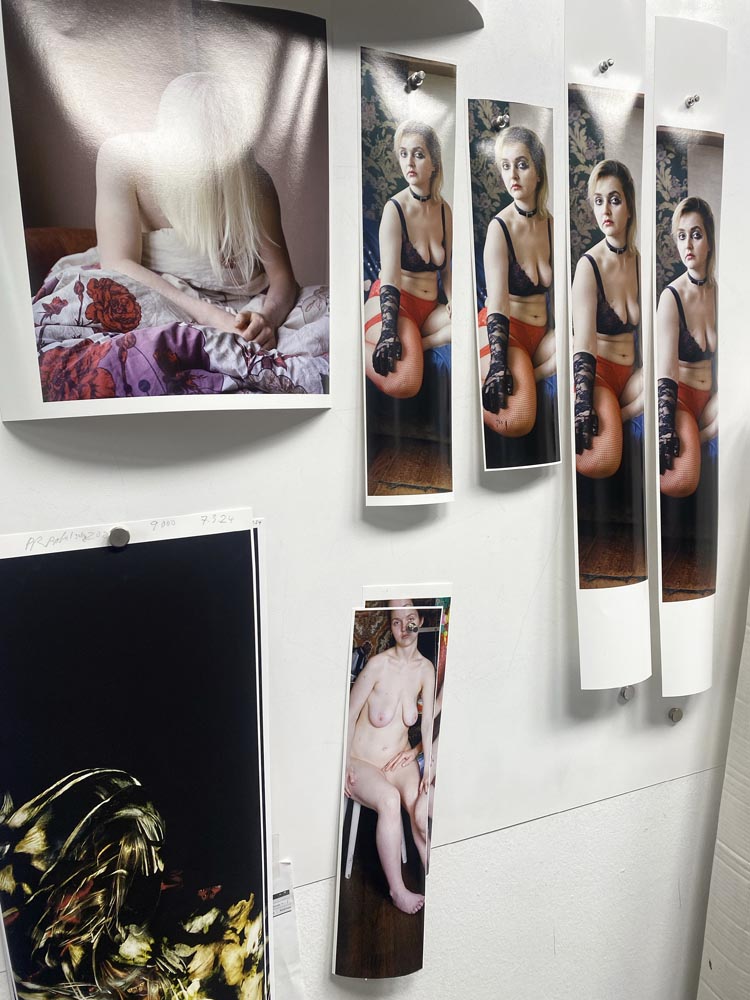
Working on the prints for the exhibition at Konnekt Berlin, Bethanien creative quarter
Many artists live by their routines, what does that look like for you?
My day starts with a cup of green tea, breakfast, and then I immediately begin my office work, such as answering emails, planning shoots, and preparing for future projects. During lunch, to catch some sun and fresh air, I go outside.
I also stay active through yoga and hiking trips. Recently, I’ve started professional swimming classes. Keeping physically fit helps me maintain mental stability and keeps me motivated for new projects and ideas.
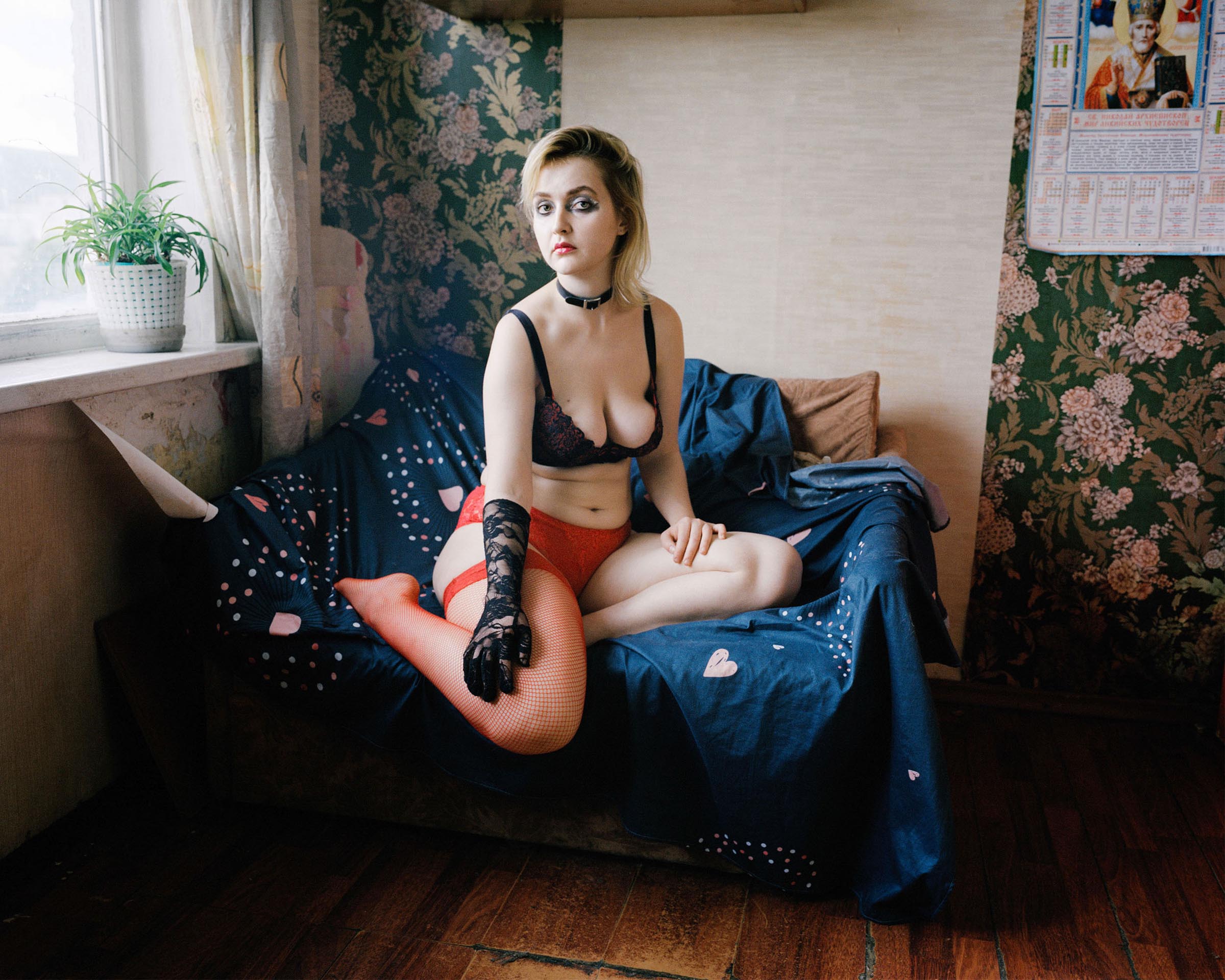
Olya is a queer artist who can barely find any jobs in Murmansk. The only job she found recently
is as a salesperson at a sex shop, where she earns around $250 a month. Her husband left Russia to escape mobilization.
Kolsky project, 2019-2024. Medium Format Film Photography
Who are your biggest influences?
My work is often compared to Alec Soth’s, and yes, he’s been a huge influence. I also admire Diane Arbus, Rineke Dijkstra, Rob Hornstra, Frida Orupabo, Arthur Jafa, Sophie Calle, Feng Li, Gregory Halpern, Joel Meyerowitz, Mark Power, Stephen Shore, Pieter Hugo, and Beijing Silvermine. I also find inspiration in other art forms—recently, I saw the Ballet National de Marseille perform in Porto, and it completely blew my mind.
Are there books or films that are an important source of inspiration?
I am obsessed with books and movies, and, of course, other artists influence me a lot. The last book that left a strong impression on me, and that I can recommend, is The Wall by Austrian writer Marlen Haushofer. As for movies, I highly recommend Germania anno zero (1948) by Roberto Rossellini, A Chiara (2021) by Jonas Carpignano, Perfect Days(2023) by Wim Wenders, and Joyland (2022) by Saim Sadiq.
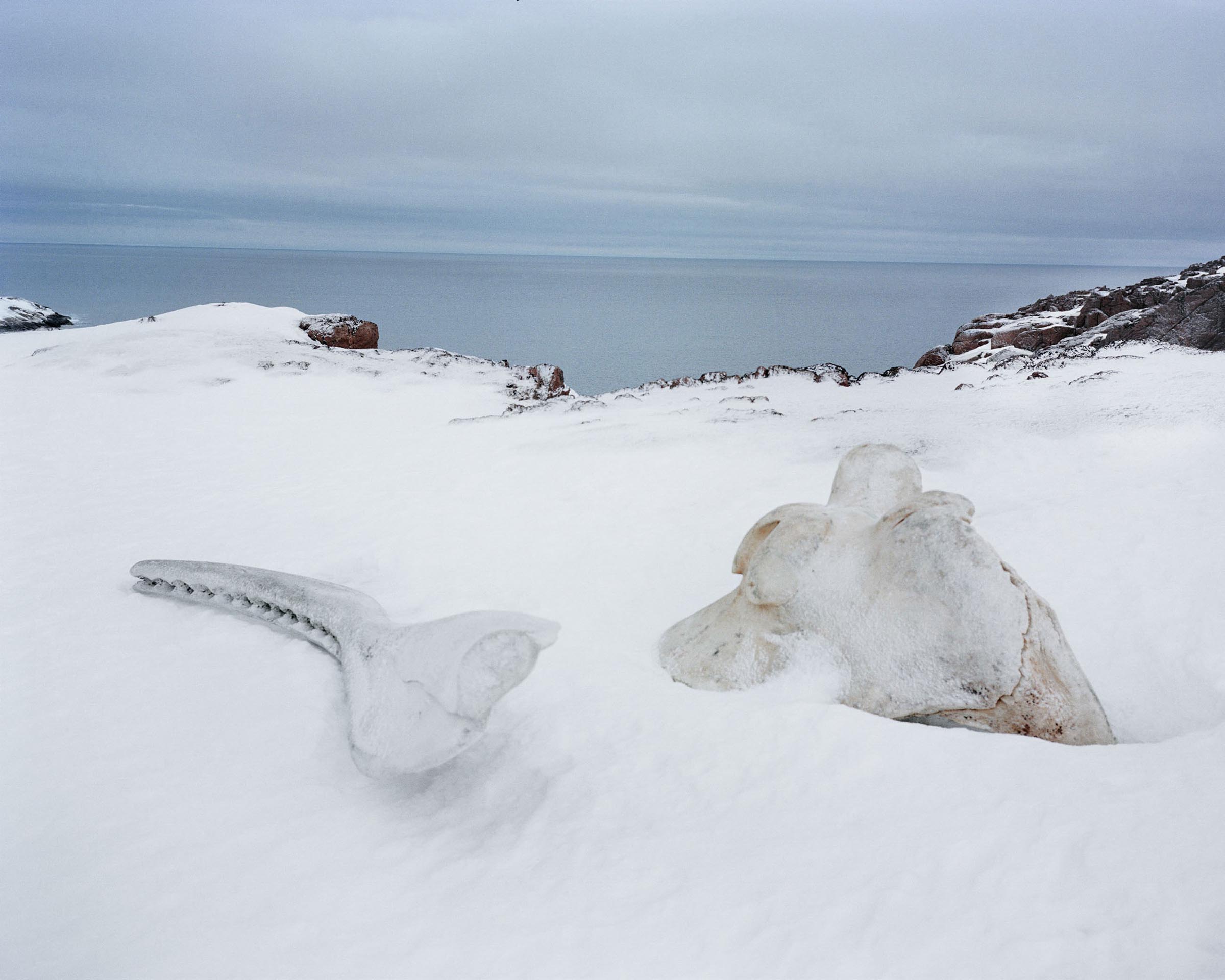
Whale bones in Teriberka.
Kolsky project, 2019-2024. Medium Format Film Photography
How will Innovate Grant contribute to your practice?
The Innovate Grant will provide essential support for my living, allowing me to focus on my artistic practice without the constant pressure of financial stress. It will give me the time and space to create freely, without the ongoing hustle that often distracts artists from their true creative work.

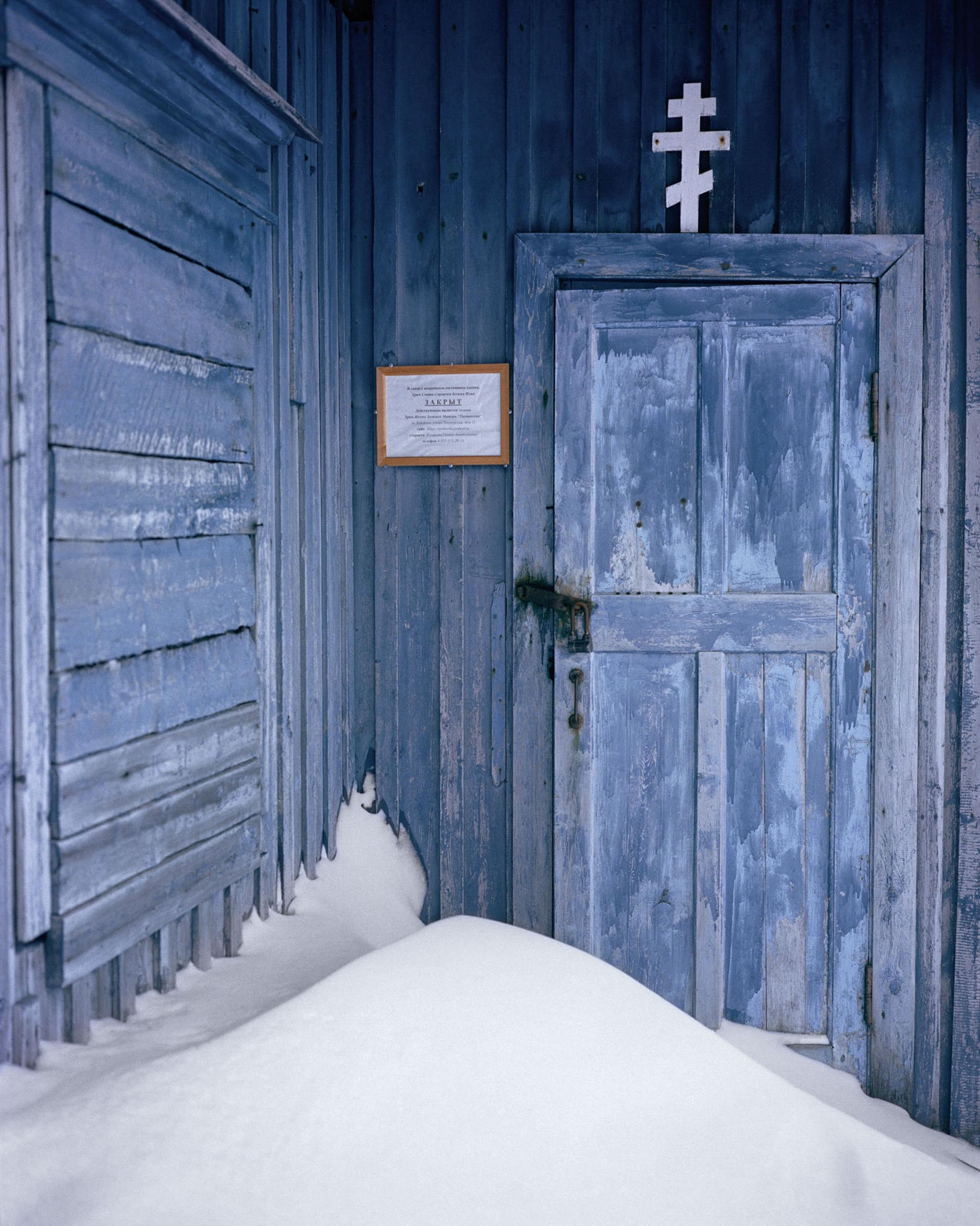
(Left) Veterinary doctor Nadezda with one of her four snakes at her flat. In several years, her husband will finish working in the military, and they will be able to move to the south of Russia, where they already bought a house. Olenegorsk
(Right) The doors of an old Christian church are closed due to its state of disrepair. On September 25, 2022, the head of the Russian Orthodox Church, Kirill Gundyaev, stated that a deceased person who sacrifices himself ‘in the line of military duty’ allegedly ‘washes away all the sins that a person has committed.’ The new chapel in Teriberka village was built in 2013, one year before the first invasion in Ukraine.
Kolsky project, 2019-2024. Medium Format Film Photography
What is the best piece of advice you’ve been given?
“You will get there, just a bit later.” This advice from my professor, Irina Ruppert, helps me relax about my goals and ambitions. It encourages me to be present in the moment and not rush the process, focusing on what’s happening right now.
What is the best advice you would give to other artists?
Drink a lot of water!
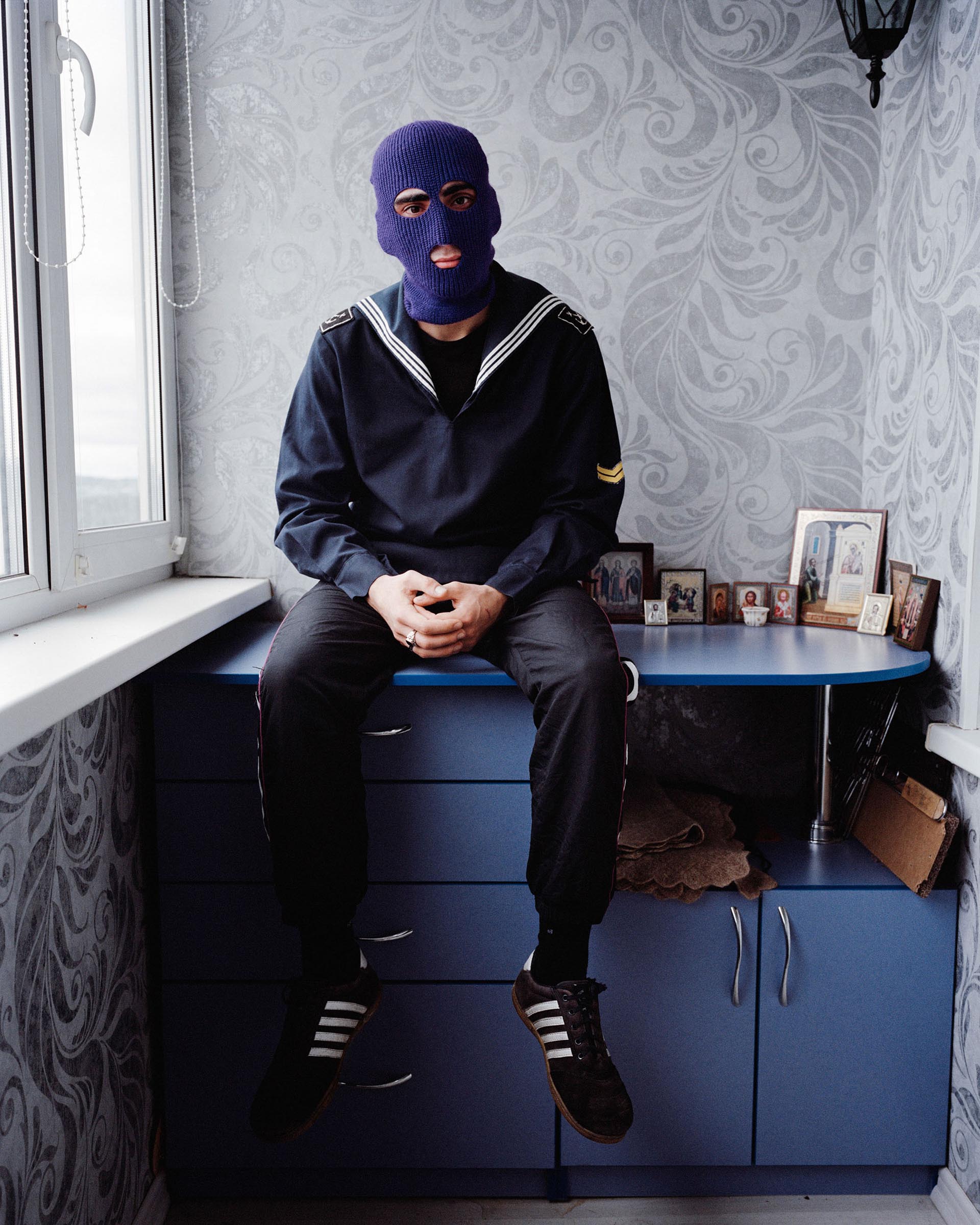
Shamil sits at his apartment’s balcony where he lives with his mother. He graduated from Murmansk Marine Fishing College, but after being subject to hazing and mistreatment on a sea vessel, he decided not to associate his life with working at the sea.
Kolsky project, 2019-2024. Medium Format Film Photography
Stay up to date with Tanya Sharapova
Website tanyasharapova.com
Instagram @tanya_sharap0va